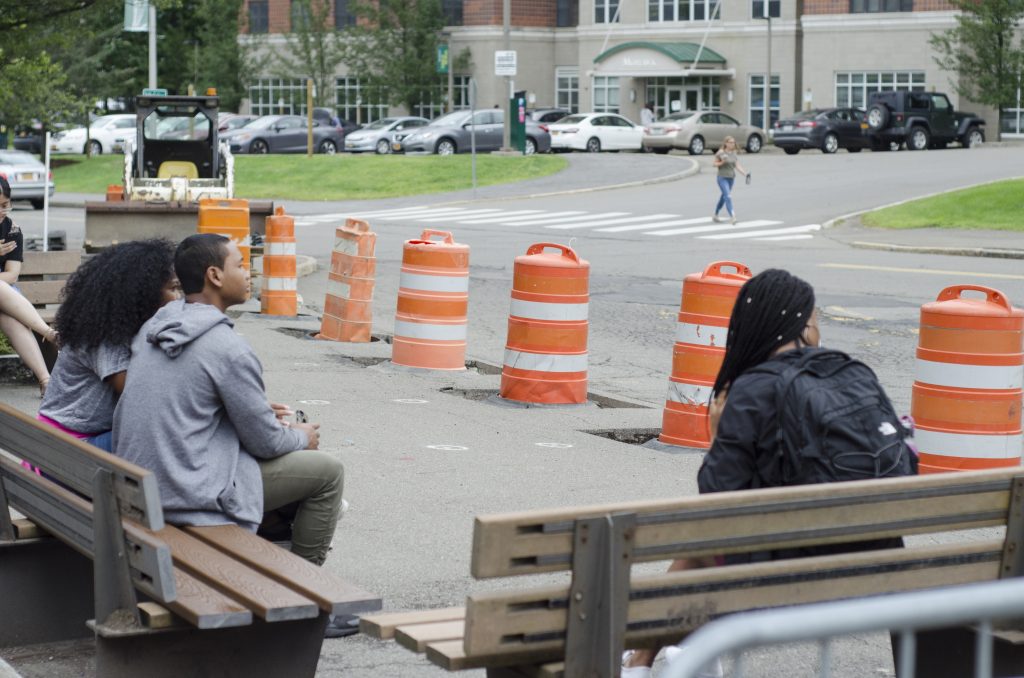
Beginning this semester, students queuing for a ride off campus will no longer be protected by metal bike racks. Instead, new traffic bollards are being installed at the University Union bus stop.
The installation of the bollards, part of Binghamton University’s construction efforts over the summer, was initiated by the University Police Department as a joint project with Physical Facilities to help manage and protect people lining up for buses.
Plans for the project started last November, with the actual construction beginning two weeks ago.
According to Tim Faughnan, UPD chief of police and associate vice president for emergency services, the heavy-duty bollards are a proactive measure that will not only help maintain order, but also grant protection in case a vehicle goes out of control.
“If a car was ever to come through there, and something went wrong with it, [the bollards] will stop a car from going into the crowd,” Faughnan said. “With that number of people, I don’t want to wait for something to happen before we say, ‘Oh, we should have done this.’”
Previously, bike racks were used to help funnel people getting on buses. Now, the bollards will serve as both a visual and physical barrier for people lining up for buses while still maintaining handicap access. According to Faughnan, these permanent bollards were considered the best option for the University Union bus stop, which is a pedestrian loading zone.
“It is going to be easier for my officers to say, ‘Stay behind the bollard,’ rather than just, ‘Back up,’” Faughnan said. “At the same time, it’s a safety measure. It is as simple as that — there is a better way to manage that bus stop while continuing to protect the crowds of people that gather there.”
Although the installation of the bollards only involved UPD and Physical Facilities, most construction projects involve various departments. According to Karen Fennie, communications specialist for Physical Facilities, regardless of the size of the project, her division usually has to work with multiple departments.
“Whether a smaller project or larger, we deal with many departments on campus as projects are developed and executed,” Fennie wrote in an email. “Sometimes it’s one on one. Other times groups of people or committees.”
According to Faughnan, it is this collegial relationship between departments that allows projects to be successfully executed.
“It would be easy for grounds crew to say, ‘Yeah, we’re going to do something tomorrow, deal with it,’” Faughnan said. “It doesn’t happen that way here. ‘We want to do this, how is this going to impact you.’ There’s a great relationship between departments here because we’re all working toward the same goal and that’s the way it should be.”
Although the bollards were planned to be completed Saturday, problematic weather has delayed the project. It is expected to be finished this week.


